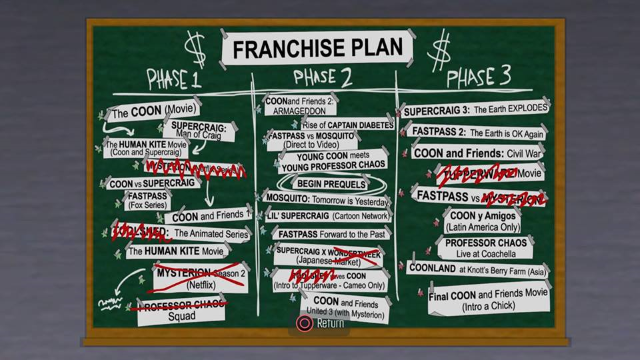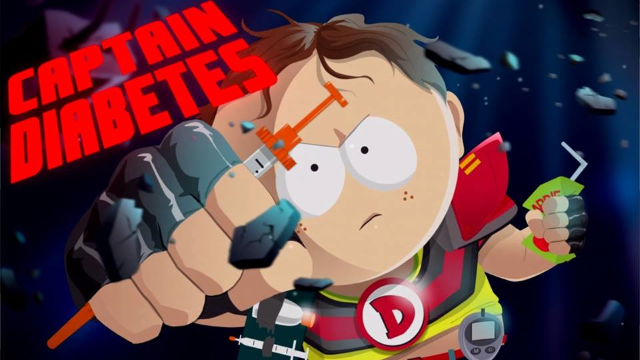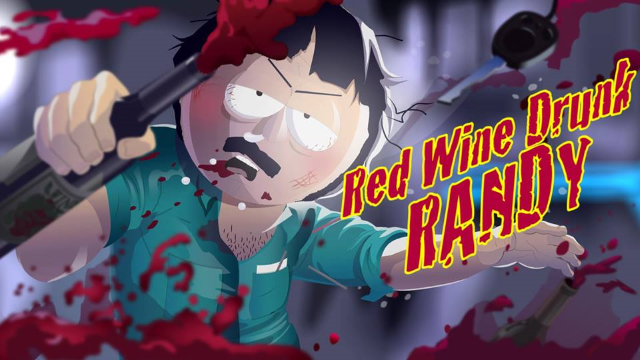To say South Park: The Stick of Truth surpassed almost all of my expectations is an understatement — The Stick of Truth was one of my favorite games of 2014 thanks to its nearly- perfect TV-to-game transition and how closely its humor was tied to the show’s apologetically crass early years.
South Park: The Fractured But Whole puts on the big shoes The Stick of Truth left behind and wears them pretty competently, but don’t come into this game looking for the same experience. It’s its own thing.
This time around, the game continues from where last week’s episode left off, with the boys’ superhero league, Coon and Friends, getting broken apart due to Cartman’s uneven franchise plan. Because, you know, why become a superhero if you don’t get to be a main part of the franchise? I highly recommend watching season 21 episode 4 on the official South Park website before diving into The Fractured But Whole.
Watching the above episode alone should fill you on the type of humor you’re going to encounter here. The Fractured But Whole‘s satire and irreverence is closer to the show’s more recent episodes — albeit a little toned down — than its predecessor. Despite this, much of the game should be fairly familiar to those who played The Stick of Truth. South Park itself hasn’t changed all that much between the two games, so it makes sense that the humor in The Fractured But Whole wouldn’t change extensively either.
As the player takes the role of the new kid in town, you get a fresh start in Coon and Friends. This means you get to choose your own starting class from the three available options. Each plays very differently from the last, but don’t stress about your choice at the outset: Cartman will allow you to change your class if you ask. Later in the game, you’re given further class options, allowing you to mix and match your abilities to come up with a combination that suits your playstyle.

While flexible via class combinations and pseudo-equipment called Artifacts and DNA, the game is not very difficult. Most players will have an easy enough time directing the new kid along with Coon and Friends in combat.
Unlike the traditional turn-based combat in The Stick of Truth, combat in The Fractured But Whole is instead more akin to tactical RPGs. You have to navigate the battlefield to position your party (or your enemies) for success. In addition, each ability you use requires some Paper Mario-style inputs to make the most of them — but thankfully, messing them up won’t penalize you.

Certain boss fights break the mold of the rest of the game’s combat, making players fight against a real-time clock in an otherwise turn-based battle system. These fights are frustrating and push the player to make hasty and rash decisions just to get a turn in before the boss interjects. I can certainly say it adds some much-needed tension to the encounters these bosses are featured in.
But one thing to note that many players will surely remember from Stick of Truth is the game’s perhaps over-reliance on status effects. Stacking bleed and grossing enemies out was pretty much the best way to play the game, even more so on its hardest difficulty. This is not the case here in Fractured. Status effects are definitely more balanced, for better or for worse. Bleed spamming was pretty great…
The map is almost the same, combat is different, but what about everything else?
Exploration in South Park: The Fractured But Whole is almost identical to that of The Stick of Truth, though that’s not necessarily a bad thing. Exploring the town of South Park and “helping” the townsfolk was one of the best things about the first game, and it continues to shine here. As before, you feel like you’re inside the show.
There is far more side content here than in Stick of Truth, too. One second you’re finding Jimbo’s wallet to get him to take a selfie with you and the next you’re trying to master pooping in the women’s toilet in the police station for completion’s sake.
As you progress in the story, you unlock both new places to explore and new abilities to make you an even better crime fighter — you know, to make it into the franchise plan. But it does keep the gameplay fresh and interesting.

Each inch of increased capability feels worth it and, despite most of what you take on being easy, feels earned. Even if you’re just finding a powerful dildo artifact in a bathtub or are simply being pushed along by the story, everything has a sense of pride attached to it. In other words, you did it, new kid!
In addition to all of the above are minigames, which range from frustrating to pretty fun — and each of them provides a wealth of customization options for your character, adding a sense of depth to the Fractured. Really, what more could you want from a South Park game?
The Verdict
Essentially, South Park: The Fractured But Whole is a worthy successor to 2014’s The Stick of Truth, but it’s not perfect.
The game’s crafting system feels tacked on and ultimately unrewarding. Most of what you craft boils down to consumables and costume items, though the Artifacts are certainly welcome.
You get all these referential items while digging through people’s drawers and trash, but they all culminate to be generic crafting items in action. You see the item name when you pick it up, then it’s chucked into the stack of generic crafting items. The reference is fleeting and disappointing, sort of like the overall crafting system.
In addition to the above, something feels a bit off. While The Stick of Truth was completely in your face with every disgusting aspect of South Park, The Fractured But Whole feels a little safer.

This may be a reflection of how the show has changed over the years (with one of the big draws to the first game being its similarities to the show’s earlier seasons) but answer me this: How does a South Park game have a pooping minigame where the poop is represented as blue instead of brown considering the overall content of the show? I think our answer lies in some sites dedicating such large portions of their reviews to how offensive The Fractured But Whole‘s humor is. Way to waste their time and the time of their readers by complaining about offensive jokes in a South Park game. High five, guys.
South Park: The Fractured But Whole does a fantastic job of filling the shoes of its predecessor. As with The Stick of Truth, you’re tossed right into a scenario that fits perfectly within the South Park universe and it eases you into its intricacies like a sociopathic chunky kid with a complex franchise plan. It’s not perfect, but if you enjoy the show you simply should play The Fractured But Whole. Just don’t get too sad over the lack of bleed spam.
(Note: A review copy of the Fractured But Whole was provided by the developer for the purposes of this review.)







Published: Oct 16, 2017 07:47 pm